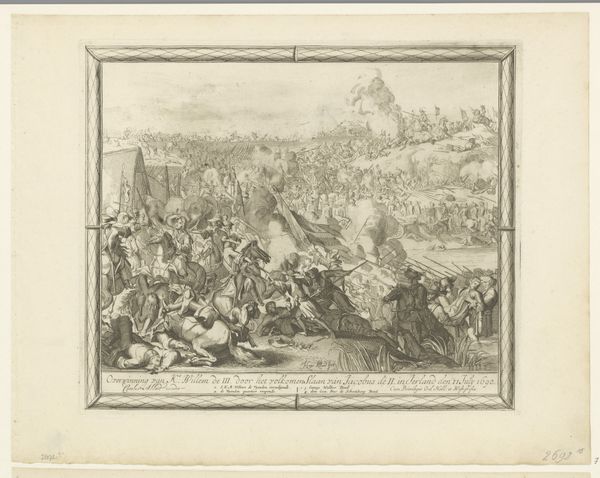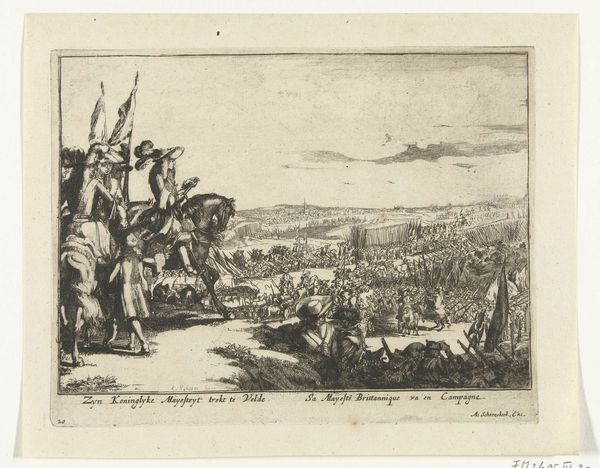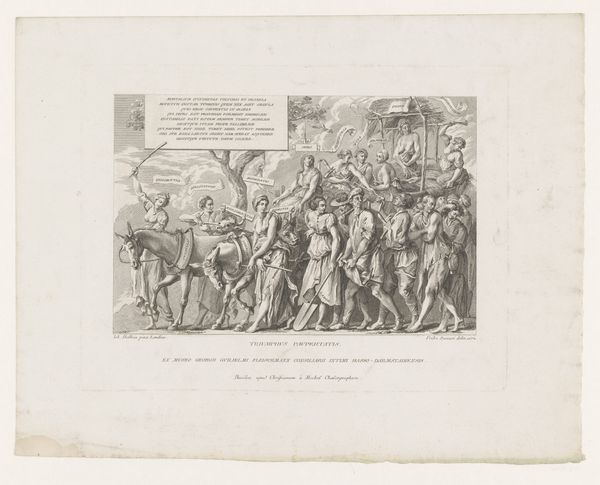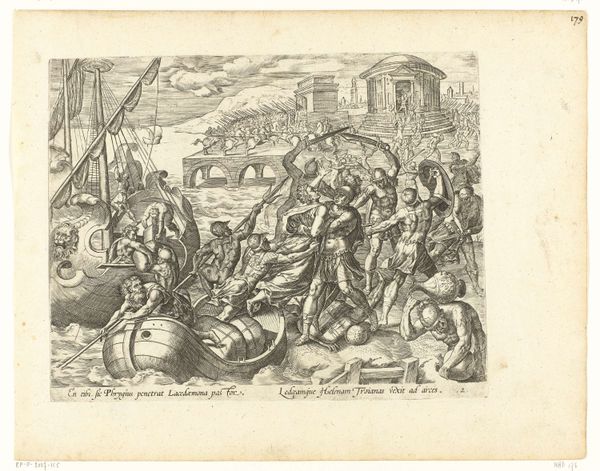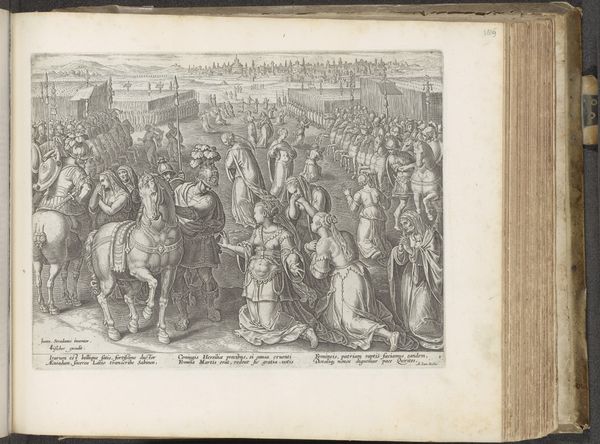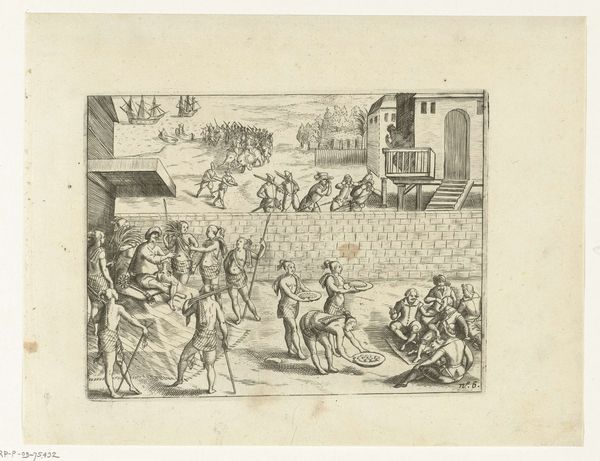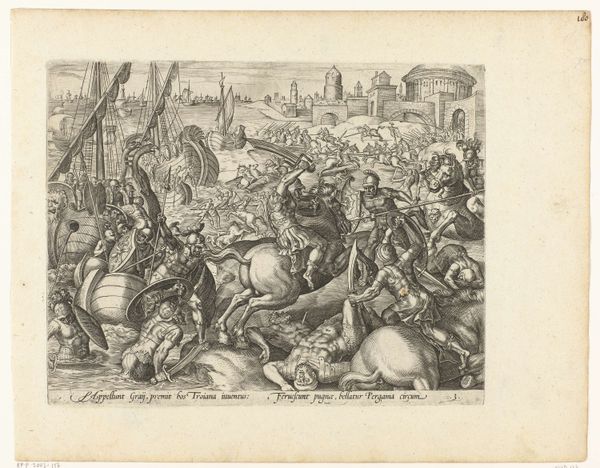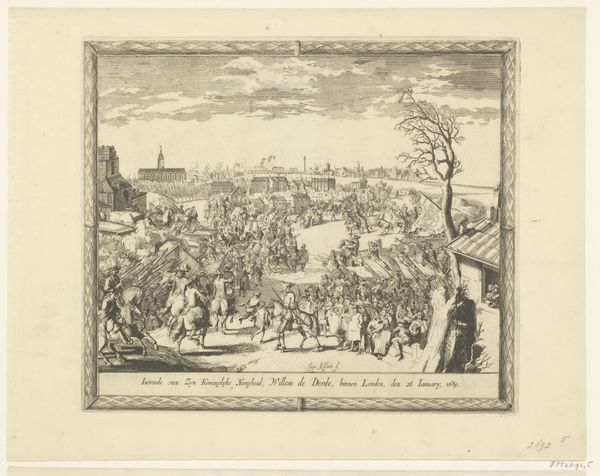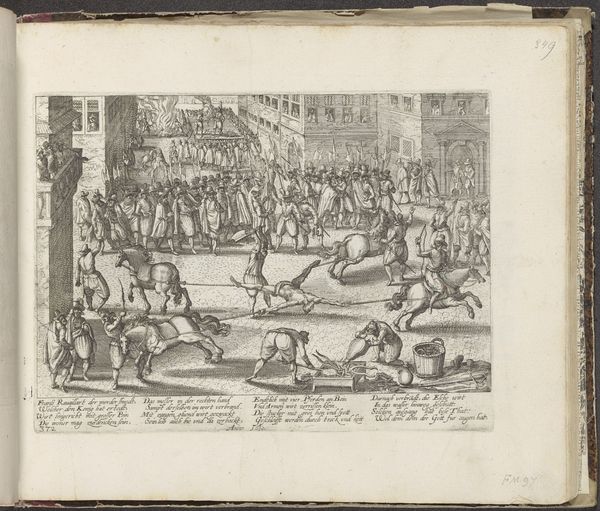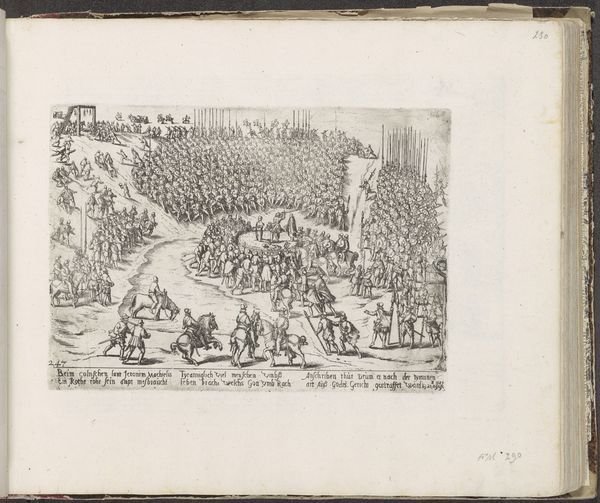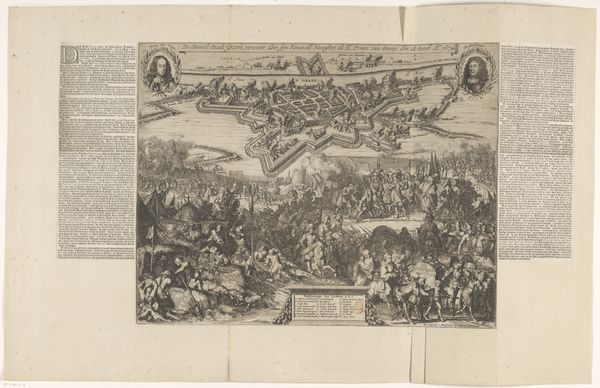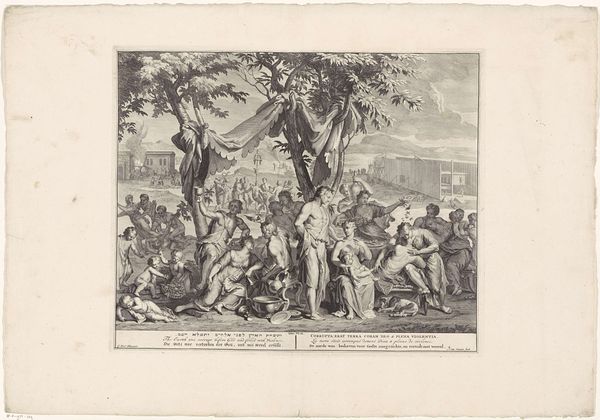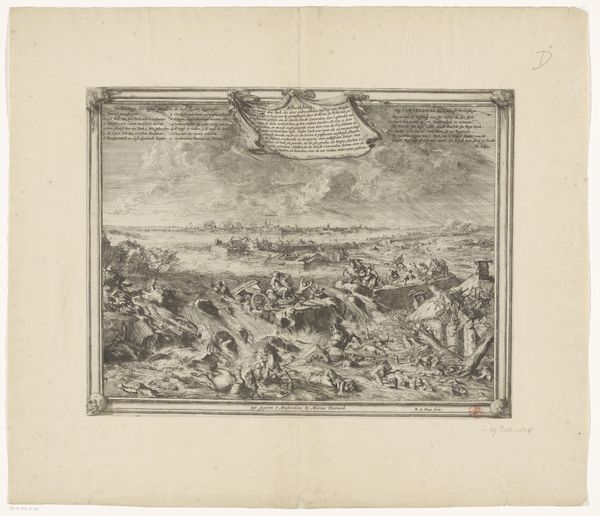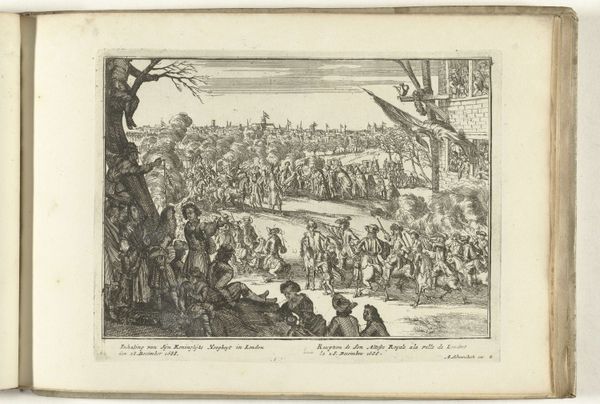
Twee schilderijen op de zijden van de triomfbogen voor het Buitenhof, 1691 1691
0:00
0:00
drawing, print, ink, engraving
#
drawing
#
baroque
# print
#
ink
#
cityscape
#
history-painting
#
engraving
Dimensions: height 335 mm, width 445 mm
Copyright: Rijks Museum: Open Domain
Editor: Here we have Romeyn de Hooghe's "Two Paintings on the Sides of the Triumphal Arches for the Buitenhof," created in 1691. It’s an engraving, isn't it? It looks like two incredibly detailed scenes, bustling with activity. What compositional elements stand out to you in this piece? Curator: The formal arrangement, Editor, commands immediate attention. Note the balanced dichotomy: terrestrial procession opposed against fluvial transit. Examine the meticulous detailing achieved through engraving. The lines are not merely representational; they serve as structuring agents, delineating depth, texture and the distribution of tonal values. Consider, also, how the strategic deployment of line weight informs the viewer’s eye, establishing a visual hierarchy within each panel. What is the relationship between the engraving's detail and the image's legibility? Editor: It is very detailed, almost overwhelming to the eye, but then when you step back you begin to understand the order in the apparent chaos. Is there significance in presenting these scenes side-by-side? Curator: Precisely! Juxtaposition here encourages comparative analysis. Observe the interplay of forms. The procession employs primarily diagonal and horizontal vectors that convey grounded momentum, while the aquatic panel features sinuous lines suggesting fluidity and dynamism. One could investigate the structural commonalities of the two: similar compositional rhythms and balances are implemented in both scenarios, regardless of subject matter. In doing so, does De Hooghe provide the viewer an interpretive framework, perhaps highlighting underlying conceptual congruencies? Editor: I see! So, by focusing on the lines, forms, and composition, we're understanding how the artist constructs meaning. I wouldn't have considered all of that initially. Thanks for elucidating the structures at play within De Hooghe's intriguing print. Curator: Formal analysis allows for appreciation of how an artist harnesses purely visual tools to communicate complex ideas. Considering such elements enriches our experience considerably.
Comments
No comments
Be the first to comment and join the conversation on the ultimate creative platform.
